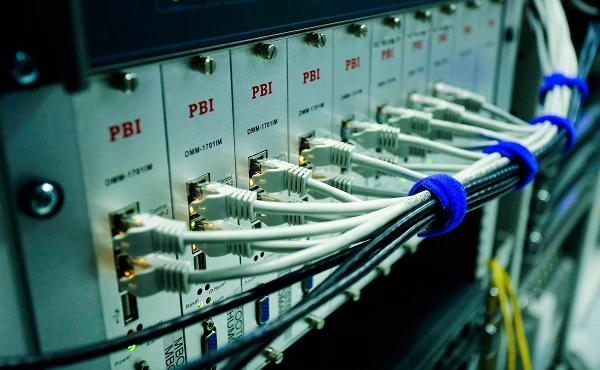Amidst the hype of cloud computing, it can be difficult to understand the cloud, let alone how it can benefit your business. And to take advantage of all the cloud offers, you need to first understand the difference between private and public clouds.
Providers like Amazon Web Services (AWS), Microsoft Azure, and Google Cloud Platform offer public cloud services. In contrast, private clouds are delivered through an on-premises data center or a privately hosted environment.
In this article, we\'ll demystify the cloud, the features of private and public cloud (including AWS support), and help you determine whether a private or public cloud solution is right for your organization.
What is the Cloud?
In its simplest form, the cloud is a network of remote servers accessed over the internet to store, manage, and process data.
Instead of housing data on a local server or personal computer, businesses can take advantage of the scalability and cost-efficiency of the cloud.
For example, a business that needs to store large amounts of data can do so without investing in on-premises hardware and software like servers and storage devices. Instead, they can access cloud-based storage services like Amazon Simple Storage Service (S3) or Azure Blob Storage.
Similarly, a business that needs to process a large amount of data can do so without investing in on-premises processing power. Instead, they can use cloud-based services like AWS Lambda or Azure Functions. In layman\'s terms, the cloud is simply a way to outsource IT resources and services.
Types of cloud services
There are three main types of cloud services:
Infrastructure as a Service (IaaS):
IaaS providers offer businesses access to storage, networking, and computing resources on a pay-as-you-go basis.
This is the most basic type of cloud service, and it\'s ideal for businesses that need to quickly provision resources without investing in on-premises hardware.
How IaaS works is businesses can access and use resources, like storage and computing power, as they need.
They only pay for the resources they consume, making IaaS a cost-effective solution. Examples of IaaS providers include AWS, Azure, Google Cloud Platform, and Rackspace.
Platform as a Service (PaaS):
PaaS providers offer businesses access to a cloud-based platform that can be used to develop, test, and deploy applications.
PaaS is ideal for businesses that want to outsource the infrastructure and management of their development environment.
How PaaS works is that businesses can access a platform, like AWS Elastic Beanstalk or Azure App Service and use it to develop and deploy applications.
PaaS includes everything businesses need to develop and deploy applications, including storage, computing power, and networking.
This makes PaaS a very cost-effective solution for businesses that want to outsource the development and deployment of their applications. Examples of PaaS providers include AWS Elastic Beanstalk and Azure App Service.
Software as a Service (SaaS):
SaaS providers offer businesses access to software that can be used to perform various tasks, like email and office productivity.
How SaaS works is that businesses can access and use software, like Microsoft Office 365 or Salesforce, over the internet. This is mainly useful for businesses that want to outsource the management and maintenance of their software.
SaaS is a very cost-effective solution for businesses because they don\'t have to worry about managing their software. Examples of SaaS providers include Microsoft Office 365 and Salesforce.
Now that we\'ve covered the basics of cloud computing let\'s take a closer look at private and public clouds.
What is a private cloud?
Let\'s now get to the private cloud, a cloud deployment where businesses have exclusive access to their private network of servers. This means that businesses have full control over their data and applications.
A private cloud can be deployed on-premises, in a data center, or off-premises, in a third-party data center.
For example, a business that deploys a private cloud on-premises will have its servers, storage devices, and networking infrastructure. On the other hand, a business that deploys a private cloud off-premises will use the servers, storage devices, and networking infrastructure.
Some samples of private cloud providers:
- Eucalyptus
- OpenStack
- VMware.
Now that we\'ve gone over the private cloud, let\'s move on to the public cloud.
What is a public cloud?
A public cloud is a cloud deployment where businesses share access to a pool of resources, like servers and storage devices. For example, a business that deploys a public cloud will use the same servers and storage devices as other businesses.
The main benefit of a public cloud is that it\'s more cost-effective than a private cloud because businesses only pay for the resources they consume. You can think of the public cloud as a utility, like electricity or water, that businesses pay for as they use it.
Some examples of public cloud providers:
- AWS
- Azure
- Google Cloud Platform
These common providers supply services like IaaS, PaaS, and SaaS instead of businesses having to build and maintain their infrastructure.
Private Cloud vs. Public Cloud: Full Comparison

Let\'s take a closer look at private and public clouds, and see how they compare.
Security
In terms of security, private clouds are more secure than public clouds because businesses have full control over their data and applications. This means businesses can implement the security measures they deem necessary to protect their data and applications.
On the other hand, public clouds are less secure than private clouds because businesses share access to a pool of resources. This means that businesses have to rely on the security measures implemented by the public cloud provider.
Of course, some cloud management software partnered with AWS or Azure can provide an extra layer of security on top of what is offered out-of-the-box.
Cost
In terms of cost, private clouds are more expensive than public clouds because businesses have to build and maintain their infrastructure. This means that businesses have to pay for the servers, storage devices, and networking infrastructure.
On the other hand, public clouds are less expensive than private clouds because businesses only pay for the resources they consume. If a business only needs a certain amount of resources, it will only pay for that amount.
Management and Maintenance
Hands down, private clouds are more difficult to manage and maintain than public clouds because businesses have to build and maintain their infrastructure. This means that businesses have to deploy, update, and monitor their servers, storage devices, and networking infrastructure.
On the other hand, public clouds are easier to manage and maintain because businesses share access to a pool of resources.
This means that businesses don\'t have to deploy, update, or monitor their servers, storage devices, and networking infrastructure. Cloud management software like CAMS and providers will take care of all of that.
Scalability and Flexibility
For any business or organization, the ability to scale quickly and easily is essential. After all, you never know when you might need to add or remove resources.
In terms of scalability and flexibility, private clouds are more scalable and flexible than public clouds because businesses have full control over their data and applications. This means that businesses can add or remove resources as needed.
On the other hand, public clouds are less scalable and flexible than private clouds because businesses share access to a pool of resources. This means that businesses have to work with the public cloud provider to add or remove resources.
Support
As with any complex system, private and public clouds will require some level of support. Private clouds are more difficult to support because businesses have to build and maintain their infrastructure. This means that businesses have to troubleshoot and fix any issues that may arise by themselves.
On the other hand, public clouds are easier to support because businesses share access to a pool of resources. This means that the public cloud provider (aws support plans, Azure, etc.) will be responsible for troubleshooting and fixing any issues that may arise. Cloud management software like CAMS can also help with support.
Conclusion: Which One Should You Choose?
Now that we\'ve gone over the key differences between private and public clouds, it\'s time to decide. If you need the highest level of security and control possible, then a private cloud is the way to go.
On the other hand, if you\'re looking for a more cost-effective solution, then a public cloud is the way to go. Of course, there\'s no right or wrong answer here. It all depends on your specific needs, priorities, and budget.


